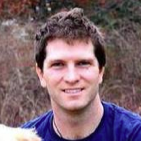Not Sure My Transcriptions Achieve Anything
-
 by
Mikerollem
by
Mikerollem
Sometimes when transcribing an entry, I'll have to search on some detail, e.g. suppose the Location
is 'Maclesfeld, 5 miles N' and I search on 'Maclesfeld' and find it's Macclesfield, so I transcribe according to the instructions as 'Macclesfield, 5 miles N'
However my search also turns up an entry:
Macclesfield, 5 miles north of (England, United Kingdom) - on (for example)
http://essigdb.berkeley.edu/cgi/eme_query?bnhm_id=EMEC9999&one=T&OK2SHOWPRIVATE=1
So it appears this entry has already been set up, with the location reformatted. I understand the principle of producing multiple copies of the same record to ensure accuracy, but once a record has been set up on the database in the required format, what is the point of still asking me to transcribe it?
I have already flagged up the fact that my totals are wrong (so no badges). Could the 2 be related?
Mike - mike@rollem.fsnet.co.uk
Posted
-
 by
DZM
admin
by
DZM
admin
Flagged this for the science team...
Posted
-
 by
Mikerollem
by
Mikerollem
Hi
sorry that was a hypothetical example which wasn't very helpful. I decided to find a real one.
I've just been presented with the following record, to transcribe:
EMEC309338
That already exists fully formatted on:
http://essigdb.berkeley.edu/cgi/eme_query?bnhm_id=EMEC309338&one=T&OK2SHOWPRIVATE=1
which has the location:- Westmorland, 5 miles west of
While I would have transcribed that as:- 5 mi. W Westmorland – following the transcription instructions given
I can't see any point in continuing to transcribe in these circumstances.
Mike
ID: Mikerollem
Posted
-
 by
reddder
by
reddder
Good question: how many of us survivors are left on NFN. I've been off CALBUG for about a month, and spending time w/the 'mushrooms'. Interesting w/o the laborious transcription of a large company of collectors to process. Of, course, on Macrofungus, one does have to do battle with the handwriting of the venerable AH Smith.
Posted
-
 by
ethrbunny
by
ethrbunny
I have the same feeling about the bird pages - no clue whether any of the locations are correct. it says 'exactly as written' but in many cases i can't decipher what's written. I wonder if it's all junk.
Posted
-
 by
ethrbunny
by
ethrbunny
@bonnie123 - I've asked for a few UI tweaks to make the process easier but haven't seen any changes. I like your idea of a 'skip' button. Some pages are beyond my limited abilities... and the rest.. well.. lots of guessing, googling and so on.
Posted
-
 by
poboyski
scientist
by
poboyski
scientist
Locations are the trickiest part of CalBug! Most of the other fields have drop-down menus from which you can choose from a list. Unfortunately the number of locations is practically infinite and therefore impossible to completely list (plus the list would change constantly). Once we (at CalBug) receive your data transcriptions from Zooniverse, we do some cleanup - particularly for the locations. Yes, we change the formatting a bit following some rules about identifying the smallest named place, larger container locations, and location modifiers (ie. 5 mi. N). There are far too many of you out there to try to explain these rules and hope they are carried out consistently. So we opted to have you transcribe the data verbatim. But even with verbatim transcriptions, you might be surprised how many different ways collectors will write the same location. We wait until we have a large data set then compare records that appear to be the same place (we use some fuzzy logic software to group them by similarity), then apply our formatting rules.
Once the records are reformatted we georeference them. That is, we find the location on a map and calculate an "uncertainty radius" around that point. For example, Sacramento, California is not a single point - it is an area. So we choose a point in the geometric center of Sacramento and calculate the smallest radius circle that will encompass all of Sacramento. But what about "5 miles NE Sacramento"? Was it really exactly 5 miles and exactly northeast? And 5 miles NE of what part of Sacramento? So the uncertainty circle grows. It is a time-consuming process and we do not want to do the same locations over and over again. That is why we compare and reformat the locations we get from Notes From Nature.
And it is by no means a waste of time! It is much faster and easier for us to cut and paste a few words rather than have to type all of these tens of thousands of records with the limited staff at the museum. And as long as our Notes From Nature team is typing these records in verbatim, the hundreds of specimens with the same label data can be reformatted with a few clicks of the mouse.
In short, your contributions allow us to do something no one thought possible - to assemble the distribution records over the past one hundred years for a million museum specimens! Thank you!
Posted
-
 by
reddder
by
reddder
I hope you realize how important it is for those of us below decks to get a heading check from the bridge. I have been doing this for a long time, and, if anyone else so clearly explained how you processed the data before, well, I never saw it. Thanx for making sense of why we do what we do. It renews my sense of purpose.
Posted
-
I really appreciate this too - I guess something very similar happens for the Herbarium?
Posted
-
 by
Mikerollem
by
Mikerollem
Hi
I didn't make my point at all clearly, I confused matters by concentrating on location format. It was not about locations.
My point is - once you have set up the details on the Essig Database for a particular collected bug, why are still presenting that collected bug to transcribers? Should it not then be removed from the pool of bugs still to be transcribed?
If I transcribe a bug that is already on the database, is my transcription still considered, by comparing it with the database (by some clever software, no doubt).? Could a discrepancy potentially cause a change the database record? Or if a record is set up on the database is it considered definitive, and unchangeable?
It's a simple question. May I please have a simple answer?
Mike
Posted